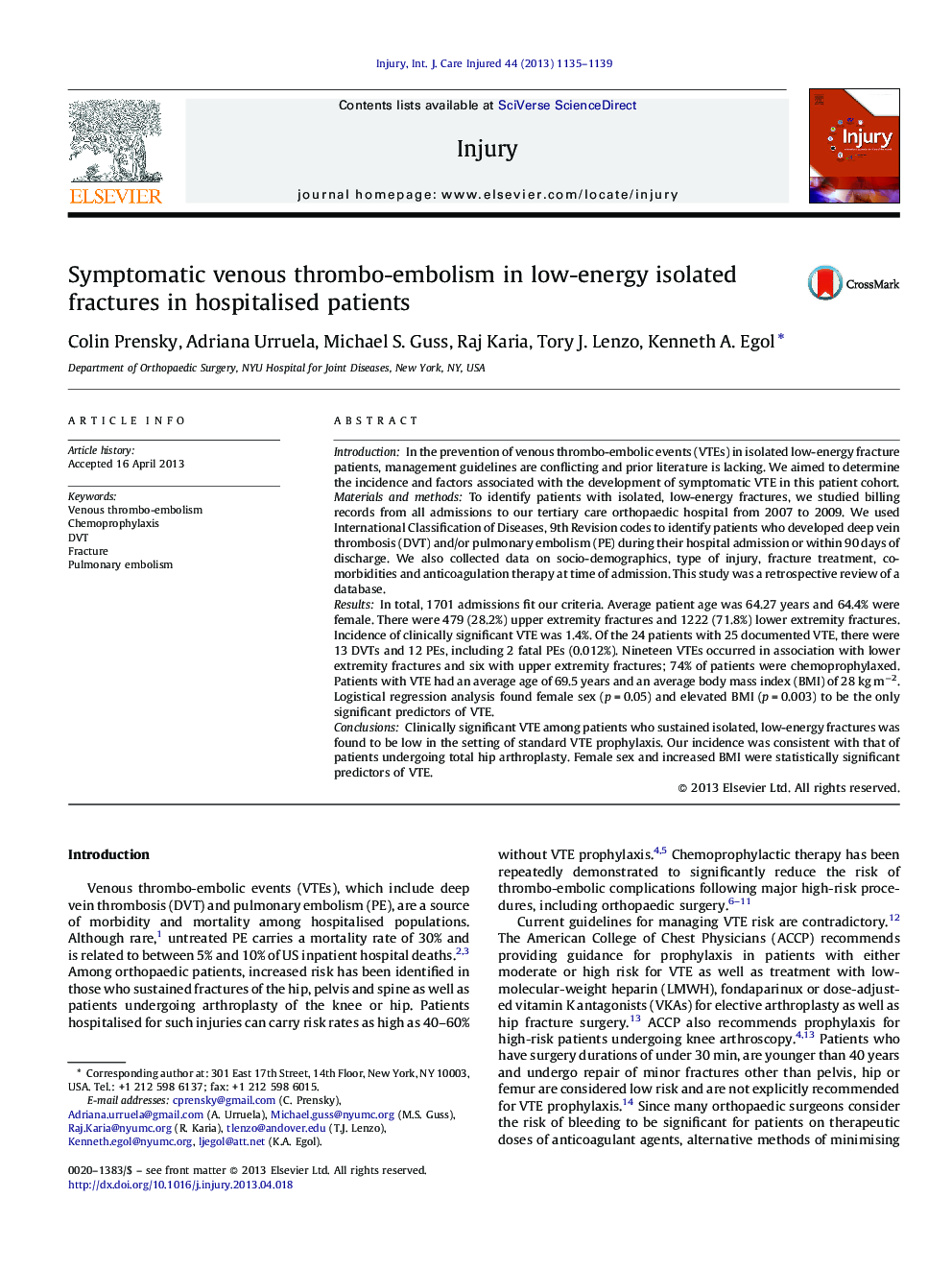| کد مقاله | کد نشریه | سال انتشار | مقاله انگلیسی | نسخه تمام متن |
|---|---|---|---|---|
| 6083669 | 1206001 | 2013 | 5 صفحه PDF | دانلود رایگان |
IntroductionIn the prevention of venous thrombo-embolic events (VTEs) in isolated low-energy fracture patients, management guidelines are conflicting and prior literature is lacking. We aimed to determine the incidence and factors associated with the development of symptomatic VTE in this patient cohort.Materials and methodsTo identify patients with isolated, low-energy fractures, we studied billing records from all admissions to our tertiary care orthopaedic hospital from 2007 to 2009. We used International Classification of Diseases, 9th Revision codes to identify patients who developed deep vein thrombosis (DVT) and/or pulmonary embolism (PE) during their hospital admission or within 90 days of discharge. We also collected data on socio-demographics, type of injury, fracture treatment, co-morbidities and anticoagulation therapy at time of admission. This study was a retrospective review of a database.ResultsIn total, 1701 admissions fit our criteria. Average patient age was 64.27 years and 64.4% were female. There were 479 (28.2%) upper extremity fractures and 1222 (71.8%) lower extremity fractures. Incidence of clinically significant VTE was 1.4%. Of the 24 patients with 25 documented VTE, there were 13 DVTs and 12 PEs, including 2 fatal PEs (0.012%). Nineteen VTEs occurred in association with lower extremity fractures and six with upper extremity fractures; 74% of patients were chemoprophylaxed. Patients with VTE had an average age of 69.5 years and an average body mass index (BMI) of 28 kg mâ2. Logistical regression analysis found female sex (p = 0.05) and elevated BMI (p = 0.003) to be the only significant predictors of VTE.ConclusionsClinically significant VTE among patients who sustained isolated, low-energy fractures was found to be low in the setting of standard VTE prophylaxis. Our incidence was consistent with that of patients undergoing total hip arthroplasty. Female sex and increased BMI were statistically significant predictors of VTE.
Journal: Injury - Volume 44, Issue 8, August 2013, Pages 1135-1139
